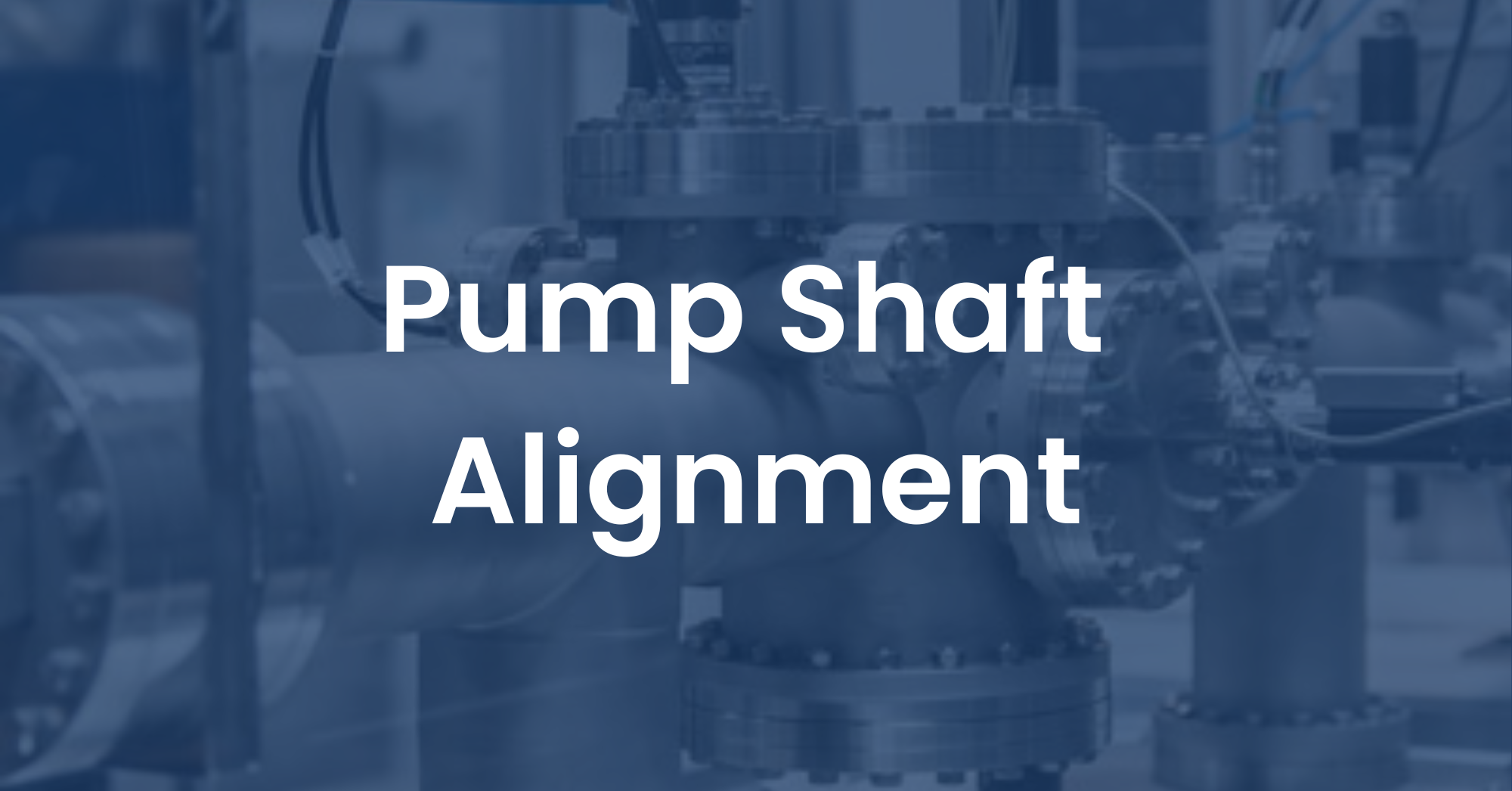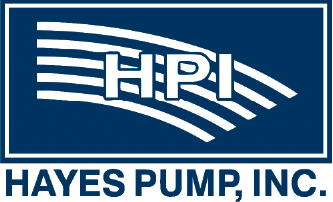Pump Shaft Alignment Methods

When a pump shaft breaks or otherwise fails, blame is often placed on the shaft itself, with stakeholders often calling for a stronger shaft. However, this “stronger is better” attitude doesn’t address the problem. It only focuses on the symptom. A stronger shaft may mean fewer failures, but it doesn’t address the root cause. The problem of pump shaft failure often results simply from a shaft’s misalignment with the driver.
The pump shaft must fit perfectly between the pump and the driver. When a shaft is off by even the slightest amount, it will cause vibrations that often result in bearing failure, leading to the pump shaft breaking down. When properly aligned with the driver, the pump shaft reduces these vibrations, thus improving reliability. For this reason, precision alignment with tight tolerances is necessary to prevent leaking seals, extend bearings' life, and avert unnecessary failures.
Why Pump Shaft Alignment is So Important
A pump shaft’s purpose involves transferring energy – torque and rotational movement – from the driver to the shaft’s impellers and other pump shaft components. A basic shaft design addresses this torque, which is vital to a pump’s functions as it keeps stress within design limits. Optimizing shaft alignment also increases a pump shaft’s operating lifespan.
Though a misaligned pump shaft doesn’t affect motor effectiveness, a correctly aligned shaft will make power transmission smoother and more efficient. When the motor and pump shafts aren’t aligned, it produces increased vibrations that result in excessive noise from the pump. The friction resulting from misalignment of the shaft results in increased temperatures, often leading to bearings, couplings, or shafts failing prematurely, which can cause the pump to leak.
Types of Pump Shaft Alignment
Pump shafts should be properly aligned during installation, though they can become misaligned during operation. Pump shafts may become entirely or partially misaligned from the rest of the pumping system when a shaft or surface shifts from its optimal position. Misaligned shafts account for over half of all malfunctions in rotating equipment. Though there are numerous methods for aligning a pump shaft, the most commonly used are straight edge, rim-face dial indicator, reverse dial indicator, and laser alignments.
Straight Edge Alignment
This method involves placing a straight edge on the pump and coupling before visually inspecting the gap between the lower and upper coupling with a feeler gauge. It’s the least accurate method for aligning pump shafts, as human eyes aren’t the most reliable for ensuring proper manufacturer tolerances.
Rim-Face Dial Indicator Alignment
This technique works best when two shaft ends are in close proximity to each other or when only one shaft can be rotated while being aligned. Displacement readings are obtained from the coupling’s dial, which is located on the rim. By either graphically or mathematically projecting these readings, the required adjustment to alignment can be determined, along with shims that assist in fitting the feet. Though more precise than straight edge alignment, when the coupling center is oddly placed in relation to the shaft’s centerline, it can result in an ingrained error.
Reverse Dial Indicator Alignment
As this method has been proven effective and involves only a moderate investment in hardware, it’s the most commonly used. It uses two dial indicators, one on the motor shaft and the other on the pump shaft. These dial indicators are sometimes mounted on couplings, though it’s best to affix them to the shafts due to the possibility of couplings being misaligned to the shaft’s centerlines. To get proper displacement readings, the shafts must rotate. Once done, these readings must be projected graphically or mathematically to determine what adjustments should be made to the motor base, while spacing shims should be placed under each foot.
Laser Alignment
The most accurate way to align a pump shaft entails using a laser alignment system, which features a transmitter and receiver. These systems also have a laser diode and position sensor positioned on the bracket and then mounted on one of the shafts. This sensor emits a light beam that’s radio-tagged. This light beam is directed toward a bracket on the other shaft, where a reflective prism returns the beam back to the first bracket and into the position sensor’s eye. One of the shafts rotates to determine horizontal and vertical readings, much like other alignment methods. A mini-computer calculates what movements are required at the motor’s base to automatically align the two shafts, so no manual calculations are necessary.
How to Align Pump Shafts
In the simplest terms, aligning pump shafts requires rearranging the motor or pump so that their respective centerlines properly line up. Though the exact steps depend on the alignment method used, there are four distinct stages of pump shaft alignment. These include pre-alignment checks, rough preliminary alignment, precision alignment, and recording exactly how it was done.
Pre-alignment check:
- Foundation for dampening of vibrations, deterioration, and strength.
- Ensure baseplates are supported by grout.
- If necessary, make air vent holes and inspect the pump shaft when planning alignment.
- Check the condition of baseplates.
- Check and measure bearing and seal tolerances.
- Check for bent shafts and loose bearings.
- Measure coupling and ensure that components transferring drive torque work well.
- Using dial indicators, check each support foot to ensure they touch the ground.
- Install or remove shims to support each foot in its natural position.
- Check pipes that connect with pump for misalignment.
- Loosen flange bolts until they can be moved by hand without leverage.
- Cut and adjust piping until bolt hole clearances align where bolts slide in.
- Fit gasket and bolt at the pump on a short-flanged spool.
- Weld spool in remaining opening.
- Make sure the pump can move enough at each foot to adjust alignment.
- Ensure there’s enough space to permit bolts to move.
- If necessary, attach jacking screws to the base frame or baseplate.
- Use a single steel washer under bolt heads or nuts to prevent washer from cupping into the bolt hole, which will misalign the pump when tightened.
Rough-in alignment:
- Bring both pump and drive shaft coupling halves in-line and square.
- With shims under each foot, center holds down bolts.
- With a straight edge positioned across the coupling, the feet should be jacked and shimmed.
- Retighten bolts until coupling halves fall within specific distances for parallel offset and horizontal and vertical diameter angularity.
Precision alignment:
This stage depends on whether rim-face dial indicator, reverse dial indicator or laser alignment procedures are used; the procedures for reverse dial indicator and laser alignment are essentially the same, so will be dealt with together.
Record Keeping
As the final part of the process, recording the exact steps will make the next alignment easier and quicker. This record-keeping should include measurement data before adjustments, any corrections to the pump’s feet and runouts from the coupling and pump shaft, and the final data and tolerances after it’s been aligned. Normally this process will take 8-16 hours the first time a pump shaft needs aligning, though the next alignment should only take half or a quarter of this time. While the preliminary process of aligning a pump shaft can be done in-house, a precision alignment should be carried out by experts.
Ask Hayes Pump About Pump Shaft Alignment
As the Northeast’s largest pump distributor, Hayes Pump can advise on pump shaft alignment to protect your valuable equipment. For advice on or to learn more about how to align a pump shaft, or any other pump-related needs, contact our knowledgeable technicians to request a quote.




